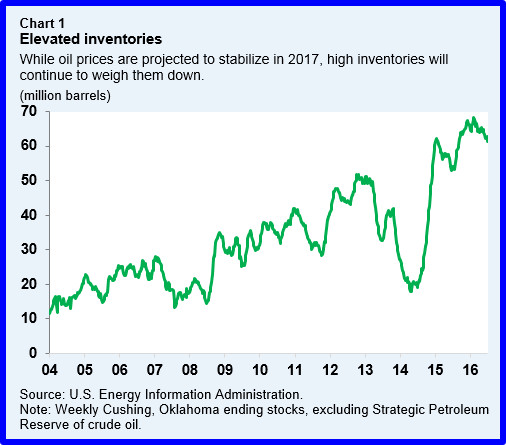Thursday, October 27, 2016
A “New Normal” for the Oil Market
From iMFdirect:
While oil prices have stabilized somewhat in recent months, there are good reasons to believe they won’t return to the high levels that preceded their historic collapse two years ago. For one thing, shale oil production has permanently added to supply at lower prices. For another, demand will be curtailed by slower growth in emerging markets and global efforts to cut down on carbon emissions. It all adds up to a “new normal” for oil.
The “new” oil supply
Shale has been a game changer. Unexpectedly strong shale-oil production of 5 million barrels per day contributed to the global supply glut. That, along with the surprising decision by the Organization of the Petroleum Exporting Countries (OPEC) to keep production unchanged, contributed to the oil price collapse that started in June 2014.
Although the price collapse led to a massive cut in oil investment, production was slow to respond, keeping supply in excess. What’s more, the resilience of shale production to lower prices again surprised market participants, leading to even lower prices in 2015. Shale drillers significantly cut costs by improving efficiency, allowing major players to avoid bankruptcy. While reduced investment is expected to result in lower production by non-OPEC countries in 2016, production still exceeds consumption. Many experts expect oil markets to balance in 2017, albeit with high level of inventory (Chart 1). That said, there is uncertainty regarding supply, especially regarding the cost associated with extraction as well as production from so-called shale “fracklog”—drilled but uncompleted wells. The latter can add to production flows in a matter of weeks and hence considerably change the dynamics of production compared to conventional oil—that features long lead times between investment and production.
Against that backdrop, OPEC countries and Russia have been increasing output, and Iran’s return to markets has added even more supply. (While OPEC members have recently agreed to cut production, that agreement is yet to be finalized.) There are other factors at play. Recent data suggest that shale-oil production may be once again more resilient than expected. And the anticipation of an OPEC production cut in cooperation with other exporters has boosted prices to the level that will further stimulate output by many shale producers.
Continue reading here.
Posted by at 11:47 AM
Labels: Energy & Climate Change
Subscribe to: Posts
